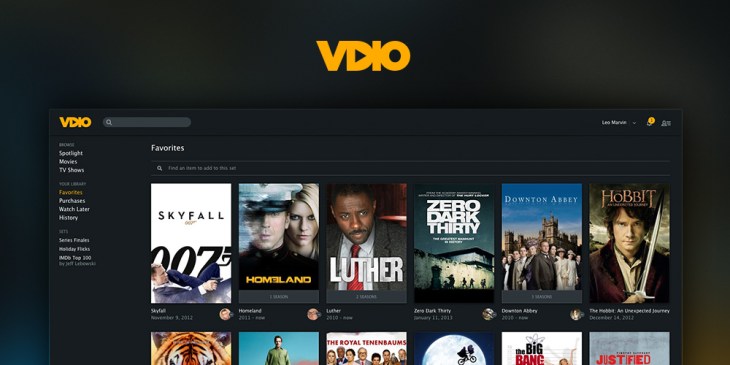Vdio, a video streaming service created to complement the Rdio music service, is today making its first public, live appearance. The site — offering not all-you-can consume subscriptions but pay-per-view films and TV shows, with an emphasis on new releases — is opening for previews in the U.S. and UK, with $25/£20 gift certificates going out to people who are already subscribers to Rdio’s premium Unlimited tier, or who subscribe in the next 60 days.
I caught up with Rdio and Vdio CEO Drew Larner to talk about the new service. Before joining Rdio, Larner spent many years working in the film industry with executive roles at Spyglass Entertainment and Twentieth Century Fox, among others.
He admits that before finally opening up for a limited beta test in November 2012Vdio was in the works for a long time — it was part of the original vision of founder Janus Friis, who had also been one of the co-founders behind Skype, Kazaa and Joost. But it was only now that they were able to secure enough content deals that they felt good enough to for a proper launch.
“We are ingesting content from all the major players, with just a couple of missing pieces. It’s at 90 percent,” he told me. That list includes we have Fox, Warner Brothers, Paramount, MGM, Sony, CBS, ABC and Disney. Gaps include Lionsgate in the UK but not the U.S.
With Rdio often positioned as a competitor to Spotify, this move puts Rdio one step ahead of it, at the same time that reports have swirled that Spotify itself may move into video services at some point. (And the launch is also a nice way of the company trying to build up some more users for the Rdio service.)
On the other hand, there is some common ground here, too. For example, like Netflix, Spotify (and Rdio), Vdio will be putting a heavy emphasis on social discovery. Using the same structure as Rdio, users will for example be able to follow others on the network for film suggestions, and films that they view will be shown to others on the site, as well as on Facebook.
Although Vdio would like to apply a subscription model to video as Rdio does for music, for now it’s been unable to secure those deals with content owners for the newest, freshest content rather than back-catalogue titles, says Larner. It’s important for Vdio to have these new titles to differentiate from existing, large services like Netflix’s.
“In order to get Argo for example or Modern Family, those aren’t available in this window as part of a subscription service,” he says. “But that’s what we wanted to start with.”
In any case, he calls subscriptions and “obvious progression” that Vdio will be making over time.
Similarly, the plan is to extend the service to the rest of the 24 markets where Rdio is now live. That’s because, just as digital music has been called out for the challenges there are in making decent revenues and profit on such thin margins, the same exists in video, Larner says. “It’s all about scale in both music and video,” he says. “There is a bunch of streaming music players out there, and if you add them up globally, it’s still less than SiriusXM has. “It’s a long way to get to the tipping point.”
On the other hand, this also represents a lot of “green fields to be covered” by companies like his. “There is profitability to be reached by combining both video and music together,” and attracting more subscribers that way, Larner says.
Canada is likely to be the next market after the U.S. and UK for the service, Larner says.
